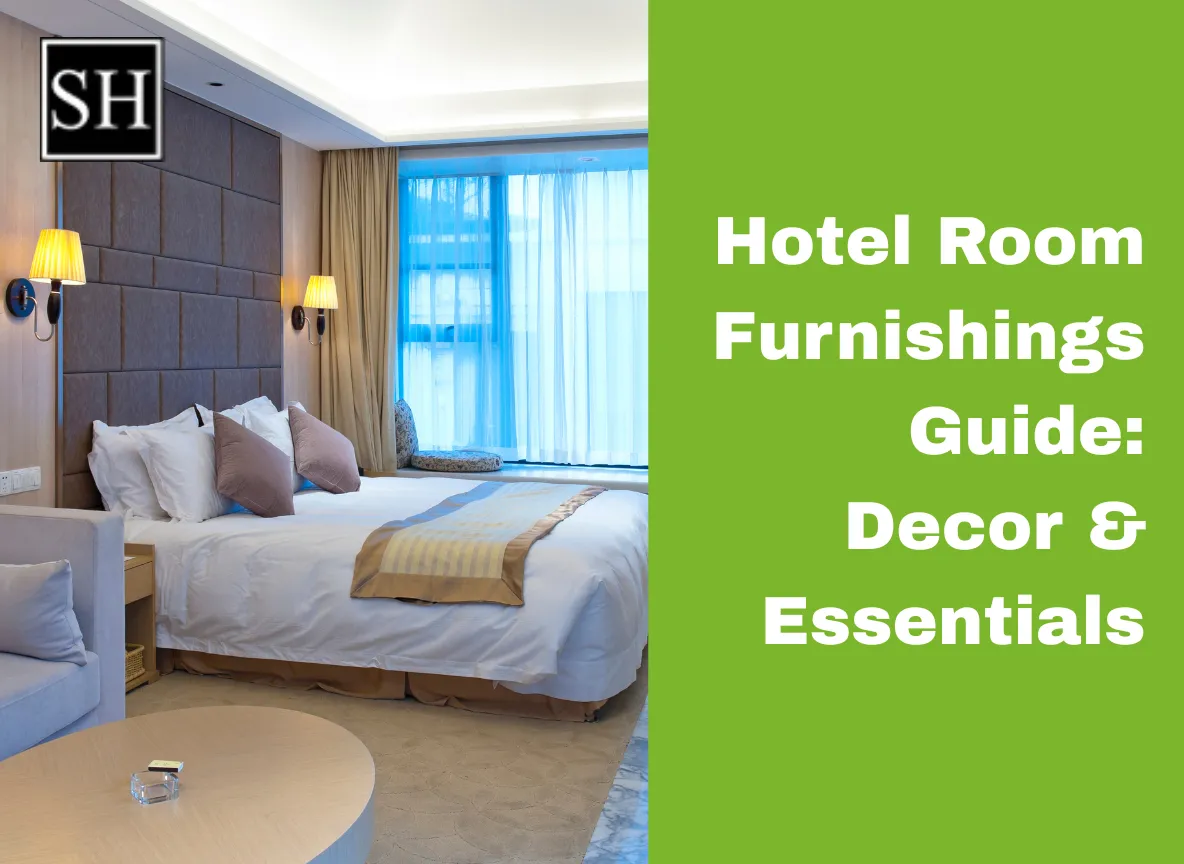
Aged Care Furniture: Enhancing Safety and Comfort
As people age, their daily needs change significantly. Once-effortless tasks can become challenging tasks and environments that provided support during earlier years may no longer provide it. That is where aged care furniture comes in--not as mere decoration but as an active participant in providing comfort, safety and autonomy to older adults in both hotels, nursing homes and aged care facilities alike. Its design meets both physical and emotional requirements of older adults.
Create safer, more supportive spaces for older adults—shop Aged Care Furniture that blends compassion with functionality.
Consider its massive effects: falls are one of the leading causes of injury among seniors, and studies indicate that appropriate furniture can lower fall risks by up to 30%. Beyond prevention, aged care furniture facilitates mobility by making transitions between sitting, standing or bed to chair easier; creating havens of warmth where residents feel valued and safe rather than isolated and restricted; prioritizing these elements allows caregivers and families to create settings which honor dignity while streamlining daily routines more smoothly. We explore various types of aged care furniture here so you can make more informed choices when purchasing. In this guide we cover essential types, benefits and selection strategies so you can make knowledgeable choices when purchasing aged care furniture - helping you make an informed choice!
Understanding Aged Care Furniture: More Than Meets the Eye
Aged care furniture refers to an array of everyday items - beds, chairs, tables and storage solutions--which are designed with seniors aging needs in mind. In contrast to standard household pieces which prioritize aesthetics or cost considerations over function tailored to seniors' changing abilities; aged care options emphasize functionality made to meet the seniors aging needs such as sharp edges or unstable legs that pose risks; aged care designs often incorporate subtle yet vital adaptations for safety purposes. It typically comprises several characteristics which include:
- Ease of Use and Accessibility: Handles, levers, and adjustable heights allow independent operation to reduce reliance on assistance from others.
- Enhancement Safety Measures: Features such as padded rails, non-slip feet, and rounded corners prevent accidents from happening.
- Robust Durability: Constructed of high-grade materials such as reinforced wood or antimicrobial fabrics, these pieces can withstand repeated use without wearing out quickly.
- Prolonged Comfort: Ergonomic contours and pressure-relieving cushions ensure extended sitting, lying, or reclining sessions without discomfort or strain.
Furniture like this proves invaluable not only in professional settings such as nursing homes but also at home for adaptation purposes. A senior moving to independent living might benefit from an adjustable bed while facilities could outfit entire common areas with similar pieces. Overall, such furniture bridges the gap between necessity and quality of life by adapting environments around people rather than vice versa.
The Multifaceted Benefits of Investing in Aged Care Furniture
Selecting specialist aged care furniture offers multiple advantages that go far beyond immediate utility. These pieces represent investments in health, happiness and harmony for older adults as well as caregivers alike - let's look at its many benefits closely!
Comfort should always come first when considering senior care designs. Older bodies frequently battle arthritis, poor circulation and chronic pain - thus necessitating supportive designs such as cushioned seats with lumbar support to relieve strain on spine and hips, and breathable fabrics to prevent overheating during rest. Imagine when an aging body settles into their chair after a long day: rather than shifting uncomfortably between sitting positions after restful moments of respite!
Safety should always come first; instability can result in devastating falls. Non-slip bases grip floors securely while weight-distributed frames prevent tipping; safety rails on beds provide discreet nighttime protection without feeling institutional. Together these elements reduce injury risks significantly while giving families and staff peace of mind.
Mobility support is another pillar. Adjustable heights enable smooth transfers while conserving energy and building confidence. A chair that rises up to meet its user or an elevated bed can turn frustrating struggles into effortless routines.
Furniture like this helps seniors maintain independence by providing them with tools to manage personal tasks like dressing or reading without constant assistance, which fosters self-respect while alleviating caregiver burden.
Finally, aged care furniture creates a welcoming environment. Warm tones, familiar shapes, and customizable options help spaces feel personalized rather than clinical. In communal areas, inviting dining sets foster social connection to combat isolation, a common challenge of later life. By weaving these benefits into daily life and adding aged care furniture into daily activities it not only furnishes rooms but enriches lives as well.
Essential Types of Aged Care Furniture: A Closer Look
Understanding each piece's roles requires understanding its specific features and benefits as well as practical considerations. Below we outline key categories with features, benefits and practical applications discussed for consideration.
1. Aged Care Beds: The Foundation of Restful Nights
Any discussion of aged care essentials would be incomplete without mentioning adjustable beds, the heart of any senior's sleeping area. With height adjustments available via remote or manual controls, these beds make accessing wheelchair transfers or caregiver visits effortless while integrated safety rails--padded to avoid bruising--can be deployed as necessary while lockable castors enable easy mobility throughout a facility.
Beyond basics, many models also include incline functions for reading or eating in bed while improving circulation and decreasing acid reflux. Reinforced frames support greater weight capacities when selecting bariatric beds; quiet motors ensure undisrupted sleep while hypoallergenic mattresses reduce allergen exposure. Facilities use these beds as part of routine procedures while at home they offer hospital-like care affordably.
2. Recliner Chairs: Havens for Relaxation and Recovery
Recliner chairs offer a dedicated spot for lounging, watching television or light napping. Wall hugger designs save space by recline without moving away from walls - perfect for compact rooms - while zero gravity positions elevate legs above heart level to ease swelling and back tension.
Armrests provide leverage when standing, which is especially helpful for those with weak grips, while pocketed coils ensure even weight distribution. Look for models equipped with heat or massage options to soothe sore muscles; nursing homes use these chairs post-surgery as recovery aids while at home they invite peaceful evenings combining comfort with therapeutic therapy.
3. Aged Care Dining Furniture: Fostering Shared Meals Safely
Aged care dining sets feature sturdy tables with adjustable heights and chairs with deep seats that promote stability for mealtime enjoyment. Rounded table edges prevent bumps while non-marking glides prevent flooring scratches or slips.
Wipe-clean surfaces made of vinyl or laminate are essential in group settings where spills are common, especially where tilted tabletops can angle to allow easier reach for those with limited arm mobility. Such ensembles promote interaction among participants while simultaneously offering opportunities to develop emotional wellbeing through collective interactions that transform bites into social gatherings that nurture emotional wellbeing.
4. Aged Care Bedside Tables: Convenient Companions
Bedside tables provide essentials within easy reach - medication, remotes, books or photos are just some of the items stored here. Their slim profiles fit tight spaces while overbed extensions add hospital-style utility; soft close mechanisms ensure smooth drawer glide while cord management hides chargers neatly away.
Lockable compartments for valuables and lamp-integrated tops for nighttime visibility should be prioritized when choosing storage solutions. Stable yet lightweight designs that roll away for easy cleaning provide practicality with customizable finishes to bring personalization.
5. Mobility-Friendly and Non-Slip Solutions: Building Confidence Step by Step
Comprehensive mobility needs to include more than individual items: chairs with wide seats and sturdy armrests can help with rising, while tables equipped with anti-tip brackets aid with rising. Non-slip mats or felt pads underneath legs anchor pieces securely; wider walkways between furniture protect from navigation mishaps.
Integrate grab bars or loop handles as an add-on for subtle support, creating fluid pathways for seniors to move freely while relieving them of the burden of constant caution. As well, make use of supplier networks and secure quality aged care furniture.
Locating Suppliers: Securing Quality Aged Care Furniture
Locating reliable aged care furniture requires due diligence to ensure its longevity and compliance with safety standards. Reputable suppliers demonstrate expertise through:
- Premium Materials: Select solid hardwoods, steel frames and flame retardant upholstery as resilient options for maximum performance.
- Comprehensive Support: Investigate delivery services and installation services as options to enhance support services.
- Proven Track Record: Examine case studies from nursing homes or facilities, customer testimonials on Trustpilot platforms and customization capabilities such as tailoring dimensions or colors to specific spaces - improving fit and appeal while meeting unique space requirements.
Aged Care Furniture for Specialized Requirements
Aging manifests differently, necessitating targeted designs.
Furniture for Dementia Care Units: Navigating Memory with Gentleness
- Environments have an enormous effect on cognition of those living with dementia, so choose furniture in soothing pastel shades with visually provoking features such as large knobs or color-coded drawers to prompt memory recall. Rounded corners with padding reduce wandering-related injuries while secure storage prevents misplaced items that heighten anxiety levels.
Wander-friendly layouts with open sightlines help reduce disorientation while tactile surfaces offer sensory comfort - these choices help promote calm while encouraging meaningful engagement over agitation.
Ergonomic Innovations: Prioritizing Posture and Pain Prevention
- Ergonomics is the practice of aligning furniture to human anatomy to combat sedentary lifestyles. Contoured seats distribute weight evenly for pressure ulcer prevention while adjustable footrests maintain neutral spine alignment. Memory foam layers offer relief from prolonged positioning.
Integrate tilt mechanisms into dynamic sitting arrangements for subtle movement. Such designs not only alleviate discomfort but also boost circulation - supporting overall vitality.
Upholding Regulatory Compliance: A Non-Negotiable Foundation
- Every piece must conform with jurisdictional guidelines – NFPA standards in the US– ensuring fire resistance and structural integrity. Antimicrobial treatments reduce infections while load testing provides stability. Compliance audits conducted by suppliers ensure they adhere to these benchmarks while safeguarding residents while streamlining facility inspections.
Elevating Quality of Life: Impact of Thoughtful Furniture Choices
Quality aged care furniture transcends its functional use, becoming part of everyday life for residents. It eases physical discomfort while enabling seniors to enjoy activities like knitting or conversing uninterrupted; in lounges, clustered seating creates memories and strengthens social ties against loneliness.
As caregivers are frequently limited in terms of time and resources, intuitive designs that provide quick bed adjustments or wipeable surfaces can free them up for compassionate interactions with patients. Financially speaking, durable builds bring savings through reduced repairs costs, decreased medical claims from falls and prolonged usability.
Imagine an effortless motion from dining table to dining table, teatime laughter to bed, all provided by carefully considered furniture choices that provide support and encourage graceful aging. Such moments serve as proof that healthy aging is possible!
Conclusion
At its core, aged care furniture represents an expression of empathy and excellence. From adjustable beds and recliner chairs that offer steady support to dining ensembles that bring communal warmth or bedside tables that add quiet utility, aged care furniture plays an essential part in holistic wellbeing by safeguarding against hazards, encouraging independence and providing spaces with homeliness.
- SOFT SEATING
- BATHROOM VANITY
- FIXTURE EQUIPMENT
- Hospitality Casegoods
- Hospitality outdoor furniture
- Senior living furniture
- Hotel reception desk
- High end contract furniture
- Premium Hotel Bedroom Furniture
- Custom commercial furniture
- Hospitality Furniture Manufacturers in Canada
- Leading Hotel Furniture Manufacturers in Canada
- Casegood manufacture canada
- Hotel Casegoods
CATEGORIES
-

Hotel Lobby Design: Styling Reception Desks for Impact
-

Complete Buyer's Guide For Best Guest Bedroom Sets
-

Hotel Bedroom Furnishings Guide: Decor & Essentials
-

How to Choose the Right Reception Desk for Hospitality Spaces
-

Top Lounge Chairs for Hotels: Modern & Luxury Hospitality Designs
-

How Hotels Can Choose the Best Sofas for Elderly Guests
RECENT POSTS









